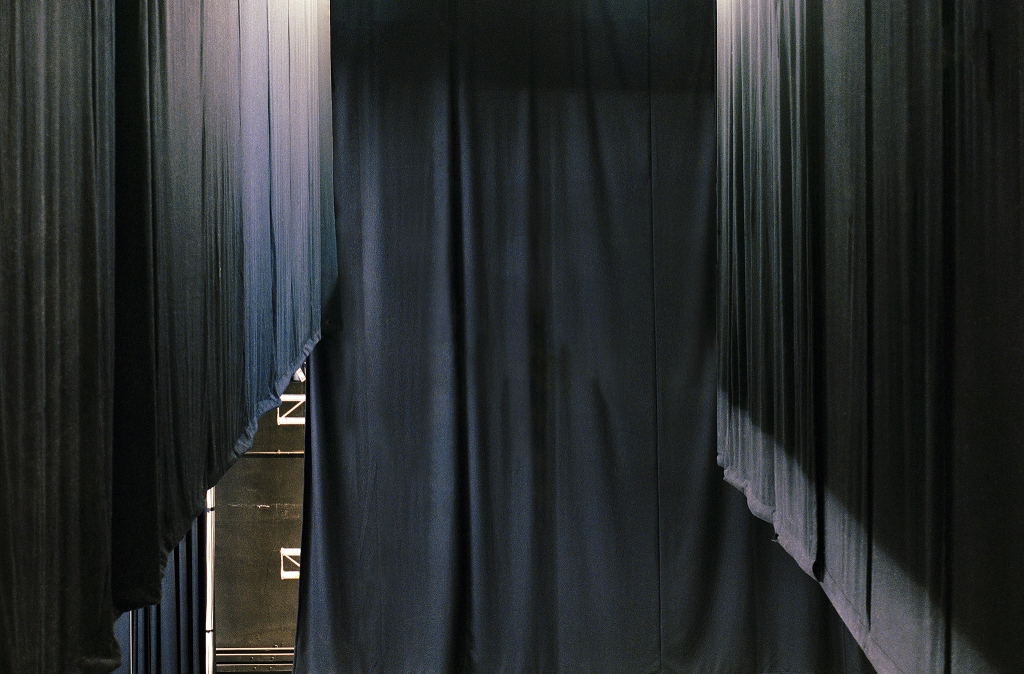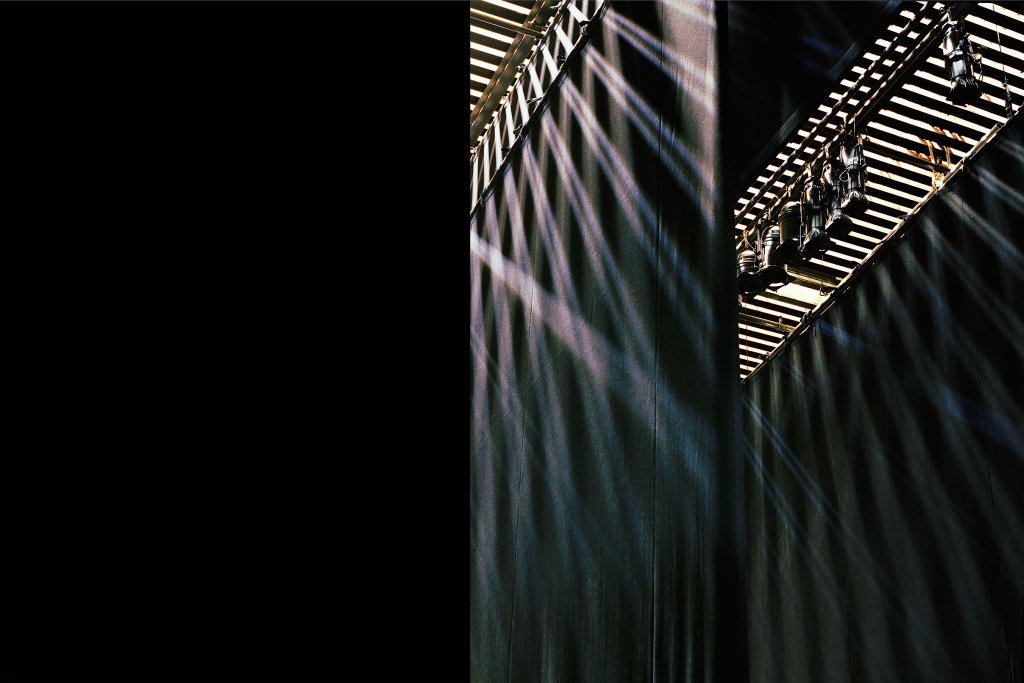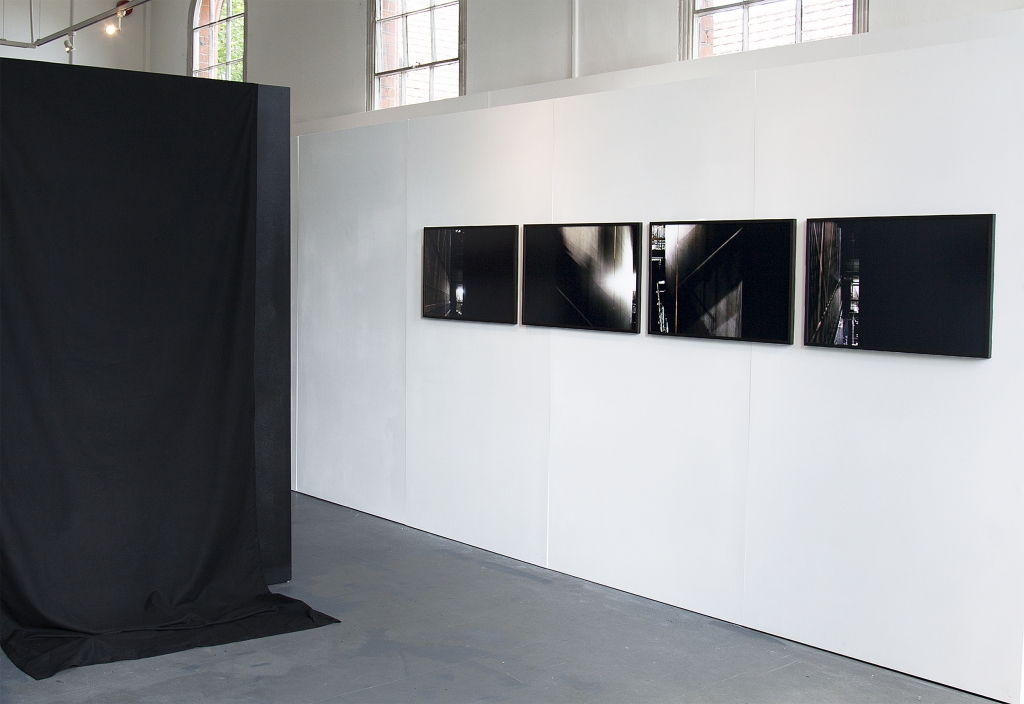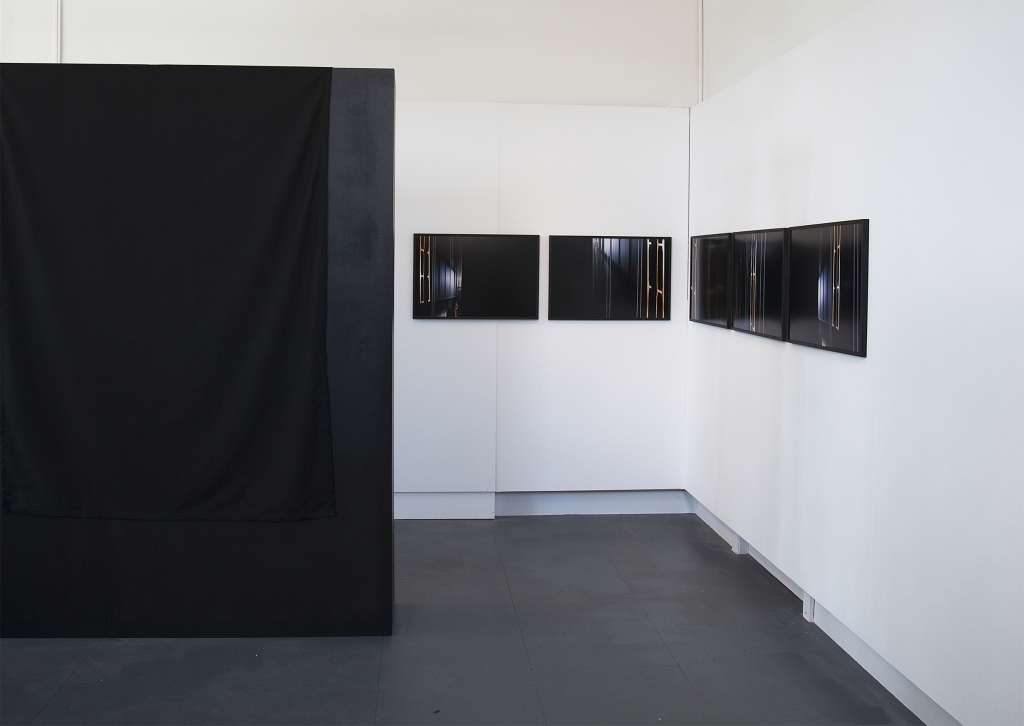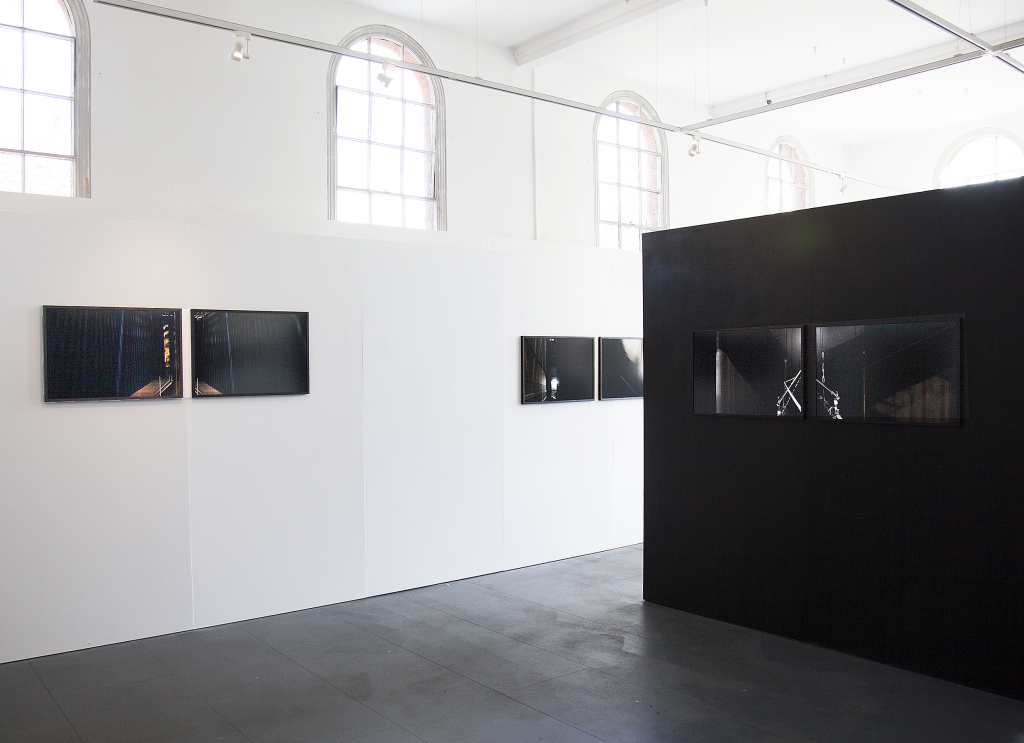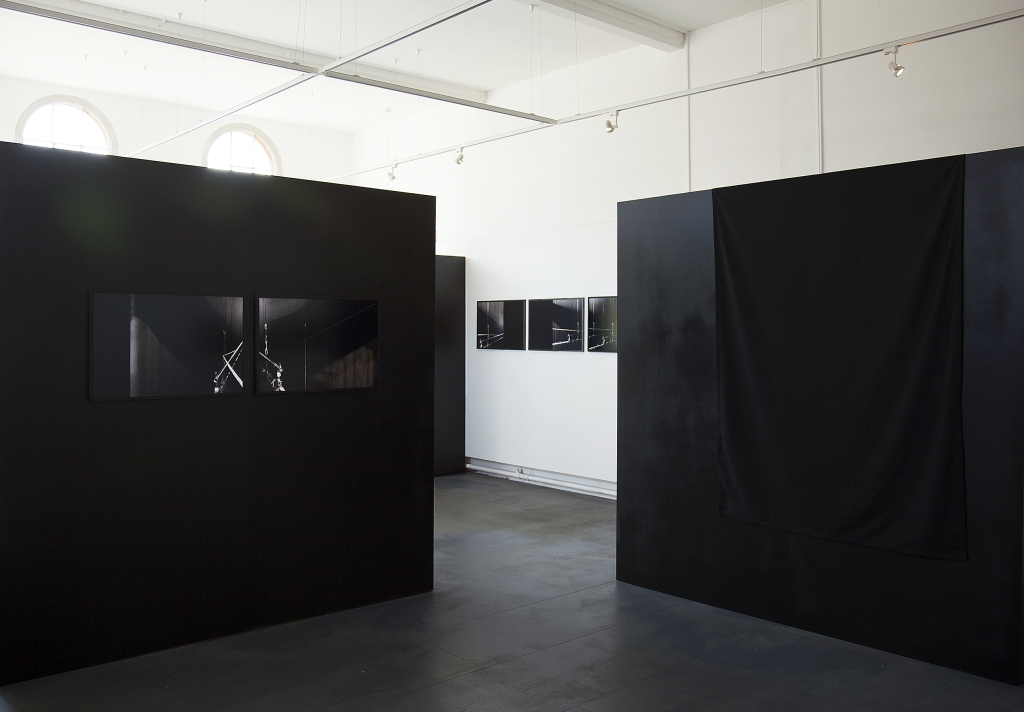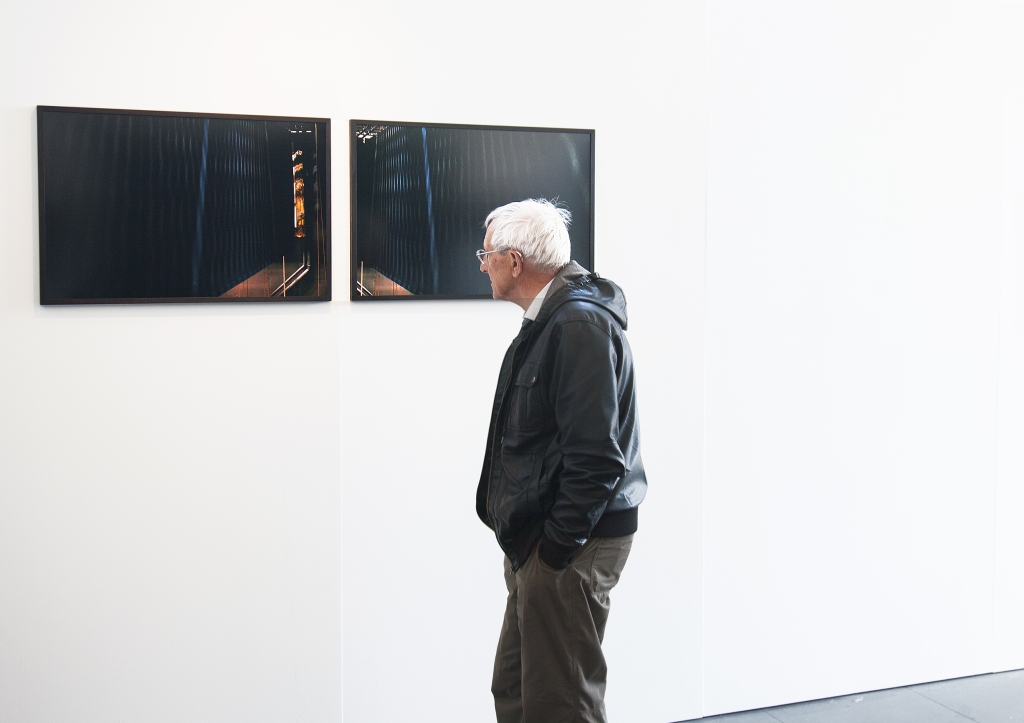Plotting Spaces
The images of Plotting Spaces are interested to explore the particular architecture of the theatrical fly-tower. Klenz’ images do not illustrate the specific narrative of any particular play, but rather allow the fly-tower – generally an unseen apparatus - to become expressive and performative in its own right.
Equally interested in the dynamics of photography and the camera as a machine. Its apparatus involves the focal-plane shutter which is directly located in front of the film. The shutter consists of two overlapping curtains that form an adjustable slit or window. When the shutter is released, the window moves across the film, exposing the film as it moves.
Klenz’s images investigate the functional similarities between the fly-tower and the focal-plane shutter of the camera. Both mechanisms can be experienced as a place of multiple concealments: the theatre separates backstage from stage and audience from stage; hiding its scenery and lighting systems highup in the air screened off by black curtains. In each of these equations the stage can may be seen as a space of revelation that at the same time implies a concealed other.
Equally photography happens in a secret place, inside the black box of a camera and produced in some black room, its workings are always hidden.
The components of theatrical production: curtains, lights, scenery and visual effects, have in common with the camera their ability to mask reality and convey illusion. Both theatre and camera rely on hidden systems to create these illusions and make believe – able to produce a scene.
Plotting Spaces strips back the space of the theatre and camera to its architectural and theatrical core. The images reveal the tension between the narrative tendencies and the abstract possibilities of both mechanisms.
Plotting Spaces brings otherwise invisible spaces into view, spaces which, although they are ‘curtained off’, infer presence.
